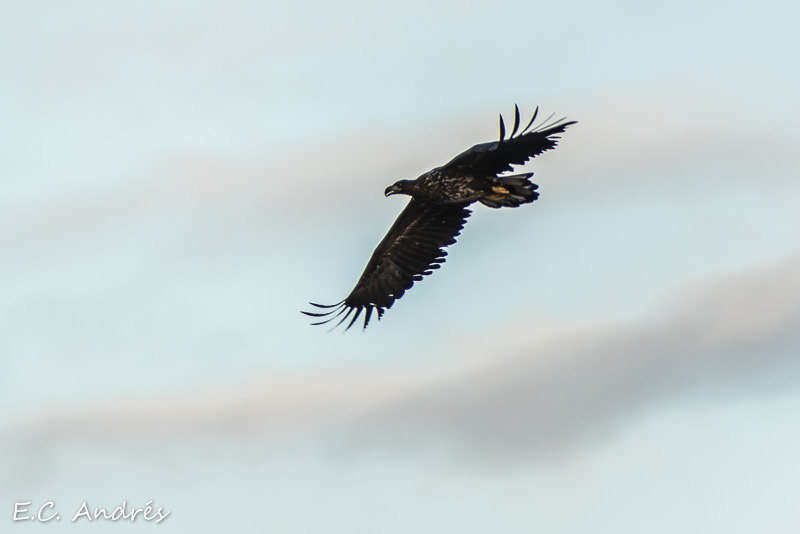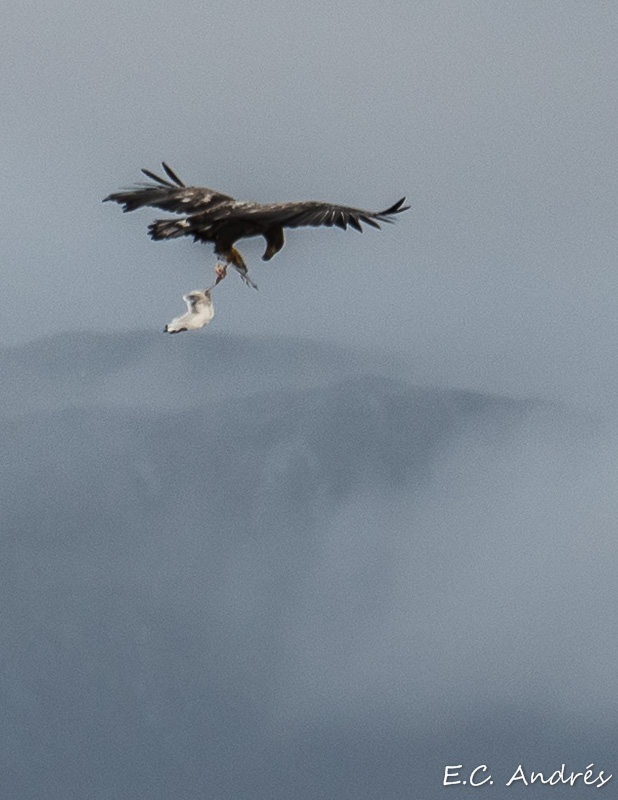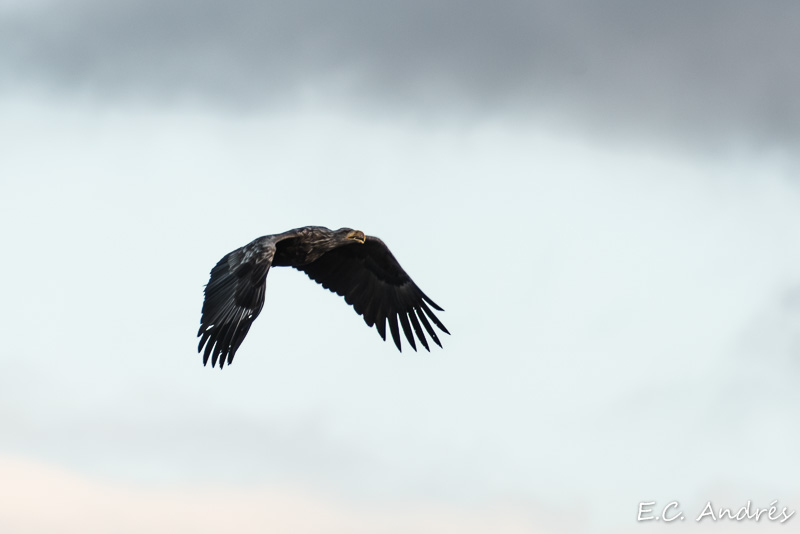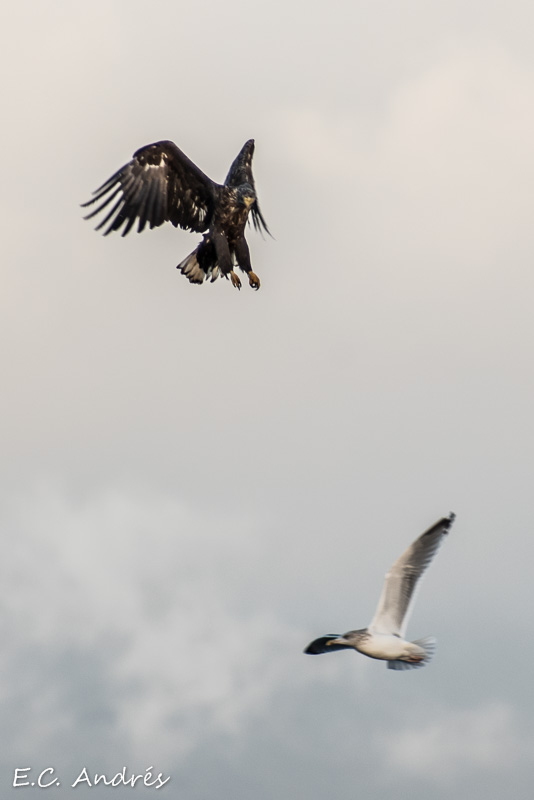When I was a child I was attracted to birds of prey, and as an adult I have never lost that feeling of fascination. I enjoy watching them in freedom and I try to take advantage of the opportunities that are offered to me to do it.
All images were taken during a navigation through the northern fjords of the Norwegian city of Tromso, on the morning of October 29, 2016.

The white-tailed sea eagle (Haliaeetus albicilla), or Ern, is one of the most easily recognizable eagles thanks to its large size, its general color pulling grayish brown, its yellow parts uncovered, and of course, the tail which gives it its name.
Its exceptional size makes it one of the largest eagles on the planet, with a length of 66-94 cm, a wingspan of 1.78-2.45 meters and a maximum registered weight of 7.5 kg.

Its natural habitat extends along the coast of northern Europe and Asia, finding its main population on the Norwegian coast.
Only those specimens that live in areas as extreme as Siberia migrate in winter to somewhat warmer places.

Their daily food needs is about 500 – 600 grams.
This is an important quantity, which is increased during the breeding period, so its territory must be broad. Between 30 and 70 km2.

They can practice as hunters, but also as scavengers or even as opportunistic thieves, taking advantage of the work of other fishing birds and otters.
As a hunter, his favorite prey are near-surface fish, other waterfowl, and also small mammals.

In this species, individuals reach maturity at 4-5 years of age, and their average longevity reaches 21 years.
Couples last for life, although if one of the spouses dies, it can be quickly replaced.
His courtship is really showy. Culminating with the couple in a falling flight while performing spectacular series of cartwheels.

Another characteristic feature is the construction of huge nests in trees and cliffs. Nests that are usually reused for breeding in the spring.
The setting is from 1 to 3 eggs, and its incubation extends for 38 days, being carried out by both parents.
The chicks leave the nest at 11-12 weeks. And during that time they are mainly fed by the mother.

In adulthood it has no natural predators, so it is an apex predator, and suffers the bio-accumulation of environmental contaminants that are present in its prey.
For reasons like this, but especially for the persecution of man, this was a species in danger of extinction. Fortunately, the conservation programs initiated in the 1980s have become a success story for conservation, with the population having recovered and now extending to new territories.



Leave a reply